Apple Vision Pro Review: you have to see it to believe it

Intro to Vision Pro
Apple CEO Tim Cook has repeatedly stated that he’s a big believer in AR (Augmented Reality), which is the technology that overlays digital objects on top of actual reality.
Unlike VR (Virtual Reality), which entirely blocks the user’s view from their surroundings and immerses them in a fully virtual world, AR keeps us present in the real world, but aims to augment our experience with the addition of contextually relevant information, graphics, or features.
Recently, a third category of headsets emerged, often called MR, or Mixed Reality. Such products are Microsoft’s HoloLens, Meta’s Quest Pro and Quest 3, and yes, Apple’s Vision Pro. As you might imagine, Mixed Reality headsets aim to deliver a mix of virtual and augmented reality experience. They are VR headsets, armed with a host of advanced sensors and cameras that pass reality through the headset and into your eyes.
Also read:
- Apple Vision Pro vs Meta Quest 3: The most anticipated 2023 AR/VR headsets compared
- Apple Vision Pro vs Meta Quest Pro: What does the "Pro" name entail in augmented reality?
- Apple Vision Pro vs Nreal Air (now XREAL Air): Some similar features, vastly different price tags
Q: Should I buy the Apple Vision Pro?
A: Probably not. However, you should definitely consider buying the Vision Pro if you’re a developer looking to create Spatial Computing apps or games. Also, if money’s not an issue, I really don’t see anything wrong in getting a Vision Pro to experience a teaser of the future of computing.
A: It probably is, but that’s common for such new, first-gen products. I assume the next iterations in Apple’s Vision product line will get progressively more accessible. Don’t forget Meta’s Quest Pro was initially sold for $1,500, and was only later discounted to $999, because of weak demand.
Q: Can the Vision Pro be useful for day-to-day work?
A: Yes, as a first-gen product in its very early days, what the Vision Pro offers is quite remarkable. It comes with a brand new OS and impressive functionality that can let you get real work done.
Q: Can you play games on the Vision Pro?
A: Yes you can, but most of the compatible games are iPad ports right now, which look great, but more often than not, you’ll need to be armed with a controller.
Q: Are there enough apps for the Vision Pro?
A: A number of popular titles have already been released for the Vision Pro, such as Zoom, Teams, TikTok, Slack and others. However, it’s still very early days and the Vision Pro App Store feels barren in comparison to what we’re used to. However, the headset comes with a full-featured Safari browser that can run anything on the web, along with an impressive set of built-in applications. You can also mirror a Mac’s screen on the Vision Pro and thus use any Mac application you want.
Q: Is the Vision Pro as good as it’s made out to be in promo videos?
A: I was skeptical at first, but yes, it’s that good, if not more.
Vision Pro design: clunky but likable
The Vision Pro is a very new thing, so it’ll take some time for us to fully understand it.
It has a very light, fresh and attractive colorway. As far as VR/MR headsets go, this is by far the best-looking of the bunch.
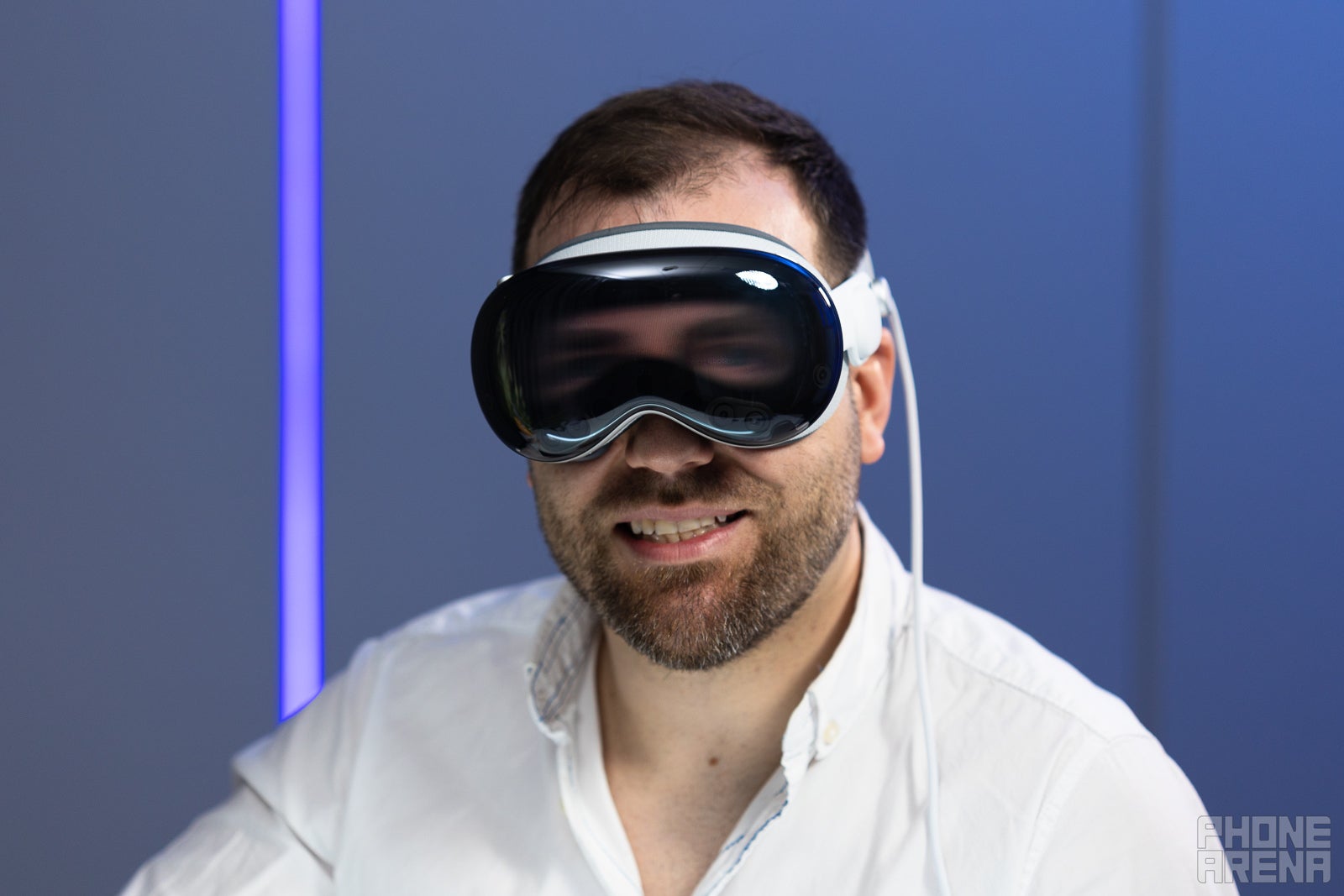
For such a complicated machine, the Vision Pro succeeds in being unexpectedly approachable. The strap fabrics and tightening mechanisms are superb, they’re incredibly well designed and engineered. The company understands the challenges in using a headset and seems to have invested enormous energy into making generally undesirable (on mainstream level) mechanisms like headstraps as pleasant and as easy to use as possible.
By default, the Vision Pro comes with the solo knit band, but there’s also a dual loop band in the box if you want the extra stability and comfort. The problem with the solo knit band is that the Vision Pro’s front-heaviness eventually gets tiring on the nose and face. It does look way better and more approachable than the dual loop strap, of course, and tends to be just fine for shorter sessions.
Vision Pro displays: how things look when you put it on
The Vision Pro has something like dual-4K OLED micro displays, and those are absolute stunners.
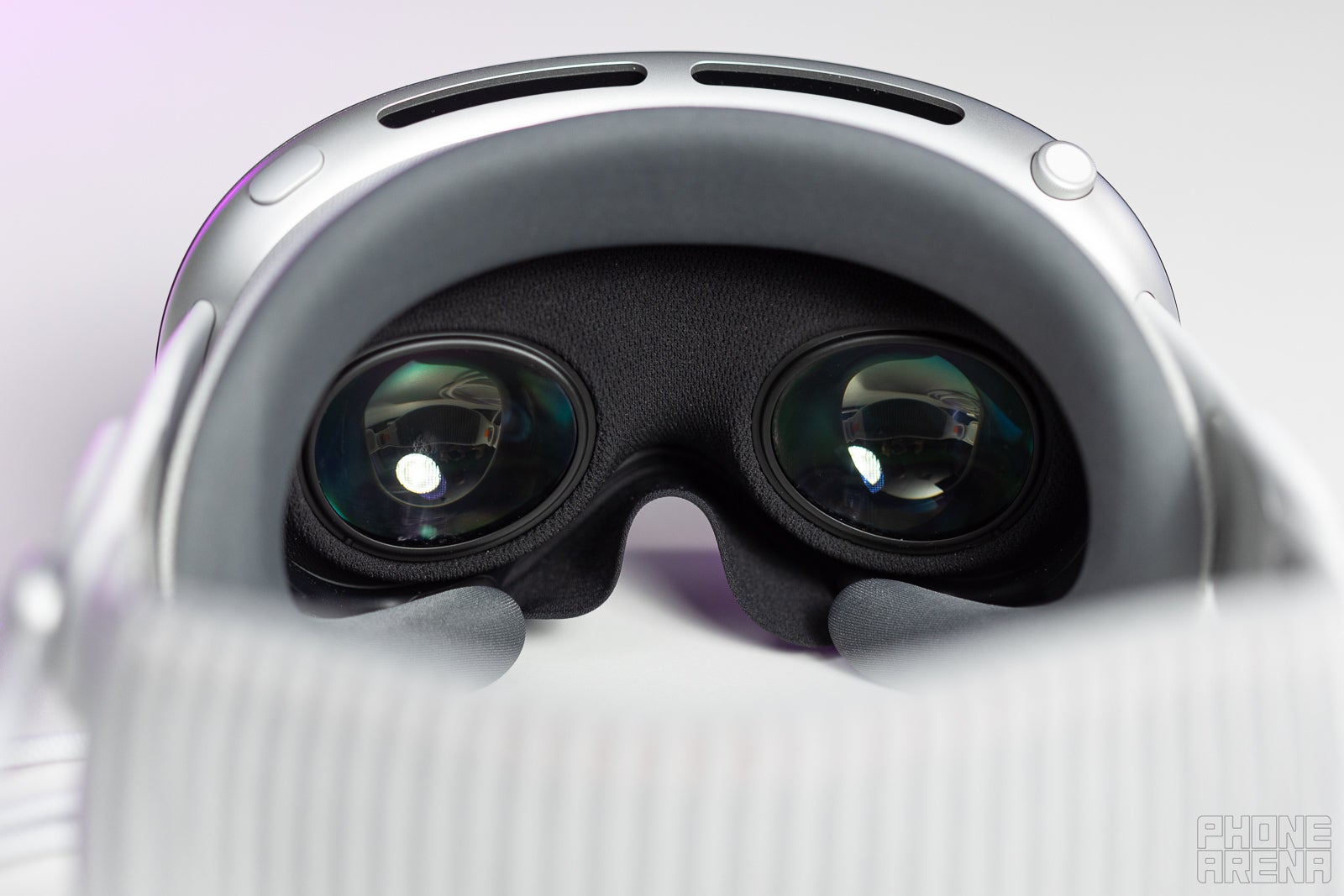
Because these are MR goggles, you see your surrounding environment via camera feed. The cameras and Apple’s post-processing are pretty adept at giving you the impression that what you’re staring at is your actual living room.
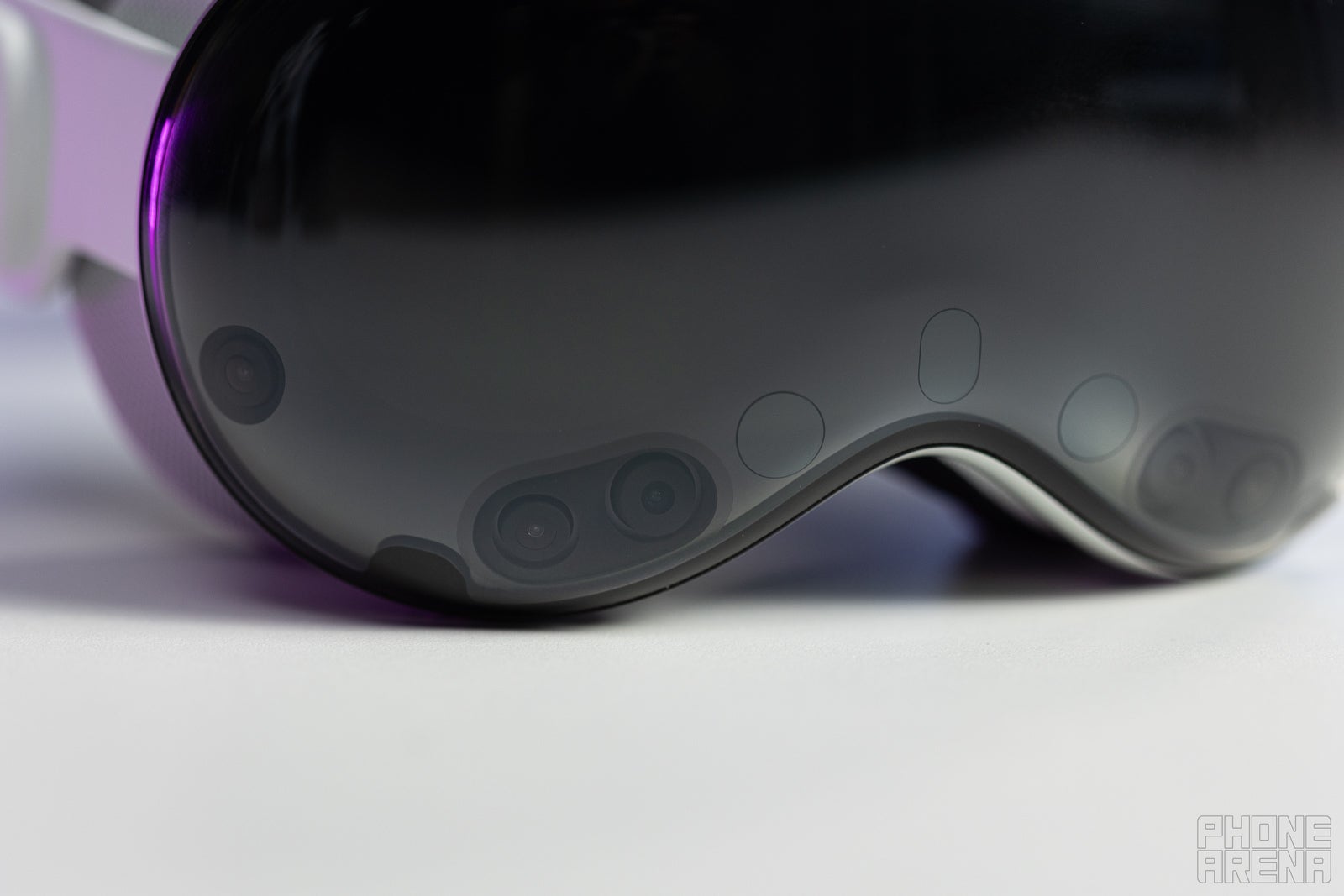
The video feed is not perfect, though. There’s a bit of motion blur and noise at times, especially in darker conditions, but overall I was surprised at how fine everything looks. Unfortunately, very small details like tiny text on your phone’s screen, for example, will be very hard to read through the Vision Pro, but as far as making you feel comfortable that you’re not going to trip over something or hit your head in the wall, the Vision Pro does a perfect job.
You can easily orient yourself around the place you’re at, seamlessly positioning or moving digital windows around as much as you want.
There is some color distortion noticeable towards the very edges of the lenses, but 99% of the time it’s not noticeable. In terms of field of view, the Vision Pro is not the widest of all VR headsets out there, but it’s pretty decent with its close to 100 degrees. It would’ve been even cooler if it was wider, but it doesn’t strike you as limited.
Video and Games
The Vision Pro is a killer media machine. If you want to be quickly impressed by its capabilities, just launch a 4K movie and play around with the digital screen. You can make it as big or as small as you want, and you can either position it in the middle of your living room, put it on a wall somewhere, or watch it in a virtual cinema theater. The choice of environment is yours, but whatever you choose, having an actual cinema experience at home (or wherever you take the Vision Pro with you) is an unbelievable feat of technology that can’t be overstated.
Vision Pro gaming demo

Couple the larger-than-life and intense visuals with the pretty decent spatial audio coming from the headset’s speakers, and there’s a multimedia experience that simply can’t be rivaled by a tablet or a notebook.
You can play YouTube videos using the Safari browser that comes with Vision OS, and that tends to work very well. Sometimes it’s a bit hard to accurately hit the smallest of UI elements, such as the maximize button which is right underneath the video timeline, but most of the time that’s not an issue. Videos will look as good as the source material allows. If the video is uploaded in 4K and was shot with a quality camera, it looks pretty dope even when you blow it up in size.
In terms of games, there currently seems to be a modest library of Apple Vision-first games, and a rather rich library of iPad/iPhone titles that you can also run on the Vision Pro. The former try to offer a more immersive experience native to the Vision Pro, while the latter appear as floating app windows that can be positioned wherever you like and made as big or small as you like. For a first-gen launch, this is more than a decent collection of titles, but to make the most of the Vision Pro’s gaming capabilities, you’ll definitely need a controller.
Right now, you can easily play ‘tap’ games that are played with only one finger. Think classics like Fruit Ninja or Where’s My Water?, or card games like Hearthstone. Games requiring two hands, e.g. one to control a joystick on the left and another to push buttons on the right are unplayable in this setup, hence the need to connect a controller. Regardless, you can imagine how cool it is to play your favorite game on the Vision Pro, in a window that’s larger than the wall in your living room!
It’s amazing to know that this thing has such a powerful chip as the M2 under the glass exterior. All this power may seem unnecessary, until you consider the fact that it has to drive two displays of higher than 4K resolution each, at up to 100Hz refresh rates! You can’t do that sort of thing with your regular mobile processor.
The image inside the Vision Pro is indeed extremely sharp and good-looking. There are no jagged edges, noticeable pixels or anything like that. Right off the bat, Vision OS looks and moves in a very refined way. You can move windows around, resize them, play 4K videos while you browse the web and have a number of other apps floating around you. Everything moves smoothly and without major hiccups.
Apple doesn’t want this signature new product to become obsolete soon. I expect that it won’t be long before more demanding software applications begin to sprout that can take advantage of this new form-factor, hence any extra power in the M2 will soon come in handy.
You can play YouTube videos using the Safari browser that comes with Vision OS, and that tends to work very well. Sometimes it’s a bit hard to accurately hit the smallest of UI elements, such as the maximize button which is right underneath the video timeline, but most of the time that’s not an issue. Videos will look as good as the source material allows. If the video is uploaded in 4K and was shot with a quality camera, it looks pretty dope even when you blow it up in size.
Right now, you can easily play ‘tap’ games that are played with only one finger. Think classics like Fruit Ninja or Where’s My Water?, or card games like Hearthstone. Games requiring two hands, e.g. one to control a joystick on the left and another to push buttons on the right are unplayable in this setup, hence the need to connect a controller. Regardless, you can imagine how cool it is to play your favorite game on the Vision Pro, in a window that’s larger than the wall in your living room!
Vision Pro performance: M2 under the hood
It’s amazing to know that this thing has such a powerful chip as the M2 under the glass exterior. All this power may seem unnecessary, until you consider the fact that it has to drive two displays of higher than 4K resolution each, at up to 100Hz refresh rates! You can’t do that sort of thing with your regular mobile processor.
Apple doesn’t want this signature new product to become obsolete soon. I expect that it won’t be long before more demanding software applications begin to sprout that can take advantage of this new form-factor, hence any extra power in the M2 will soon come in handy.
VisionOS software
Interacting with your eyes and hands
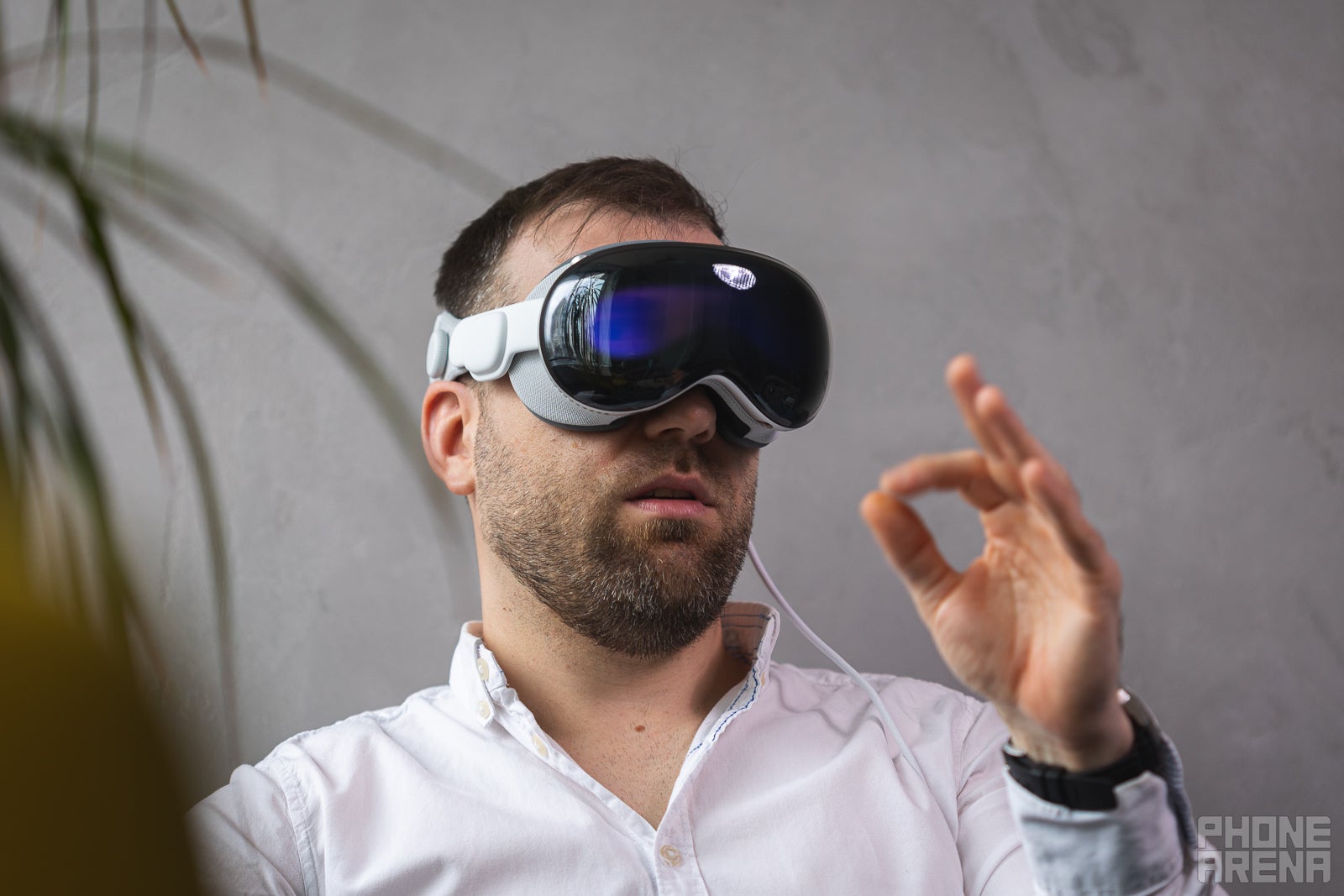
Once you set it up properly, it is remarkable how accurate the eye tracking system is. The Vision Pro is smart enough to know exactly what you’re looking at, and that’s essentially your hover action. Let’s say you want to open the Photos app from the homescreen. What you need to do is just look at it and then do a small pinching gesture with your thumb and index finger. And pop, it opens.
Vision Pro UI demo

Because of the elaborate setup of cameras and sensors around the Vision Pro, the device is quite adept at catching this small pinch action from all sorts of angles. You don’t have to be weirdly holding your hand up in front of you for the device to detect it.
There’s really something to this whole eye and hand tracking thing. After just a couple of hours of using the Vision Pro, I switched to my computer and was initially surprised that things don’t just light up when I look at them. I started missing the natural way of interacting with digital objects. On several occasions, I instinctively looked at a browser tab or an app icon and tried pinching to tap on it, to no avail.
Vision Pro app ecosystem
For such a different and new product, debuting with a brand new OS, The Vision Pro actually comes with a pretty decent set of built-in applications:
- TV
- Music
- Mindfulness
- Settings
- Freeform
- Safari
- Photos
- Notes
- App Store
- Messages
- Keynote
- Files
- Books
- Calendar
- Clock
- Home
- Maps
- News
- Podcasts
- Reminders
- Shortcuts
- Stocks
- Voice Memos
- Tips
- Encounter Dinosaurs
Out of the box, you can accomplish quite a lot with the Vision Pro, especially considering the full-featured and high-performance Safari web browser included. Whatever I tried worked seamlessly, at times even better than it does on an iPad. While Apple is absolutely applying a ton of what it’s learned from its mobile operating systems, Vision OS has that powerful desktop OS vibe.
There is a ton of available apps in the store already. Some notable ones are missing, such as Facebook, Instagram or Messenger (you can access those via the web, though), while others like X, TikTok, Teams, Zoom, and many more are here. The fact the Vision Pro has access to many supported iPad and iPhone titles right out the gate gives it a huge advantage.
Vision Pro battery life: ah, the external battery!
While standing still, the battery doesn’t stand too much in the way, but as soon as you want to move around while wearing the Vision Pro, it immediately becomes something to deal with. As long as you consider its placement before putting on the headset, it won’t be an issue.
Despite the sizable external battery, Vision Pro battery life isn’t spectacular. The headset lasts about 2 hours on battery power. Thankfully, you can keep the battery itself plugged into a charger if you want to use it longer than that. Obviously, we’re still very far from being able to go completely mobile with this sort of headset. I don’t see this as such a huge problem right now, because few people would want to show up wearing the Vision Pro while out and about. Its biggest use cases for now would be at home or at the office.
Vision Pro spatial audio
It might seem unnecessary, but I think it’s downright mandatory for the Vision Pro to be equipped with its own speakers. This is supposed to be a full-featured computer, so it must come with its own audio.
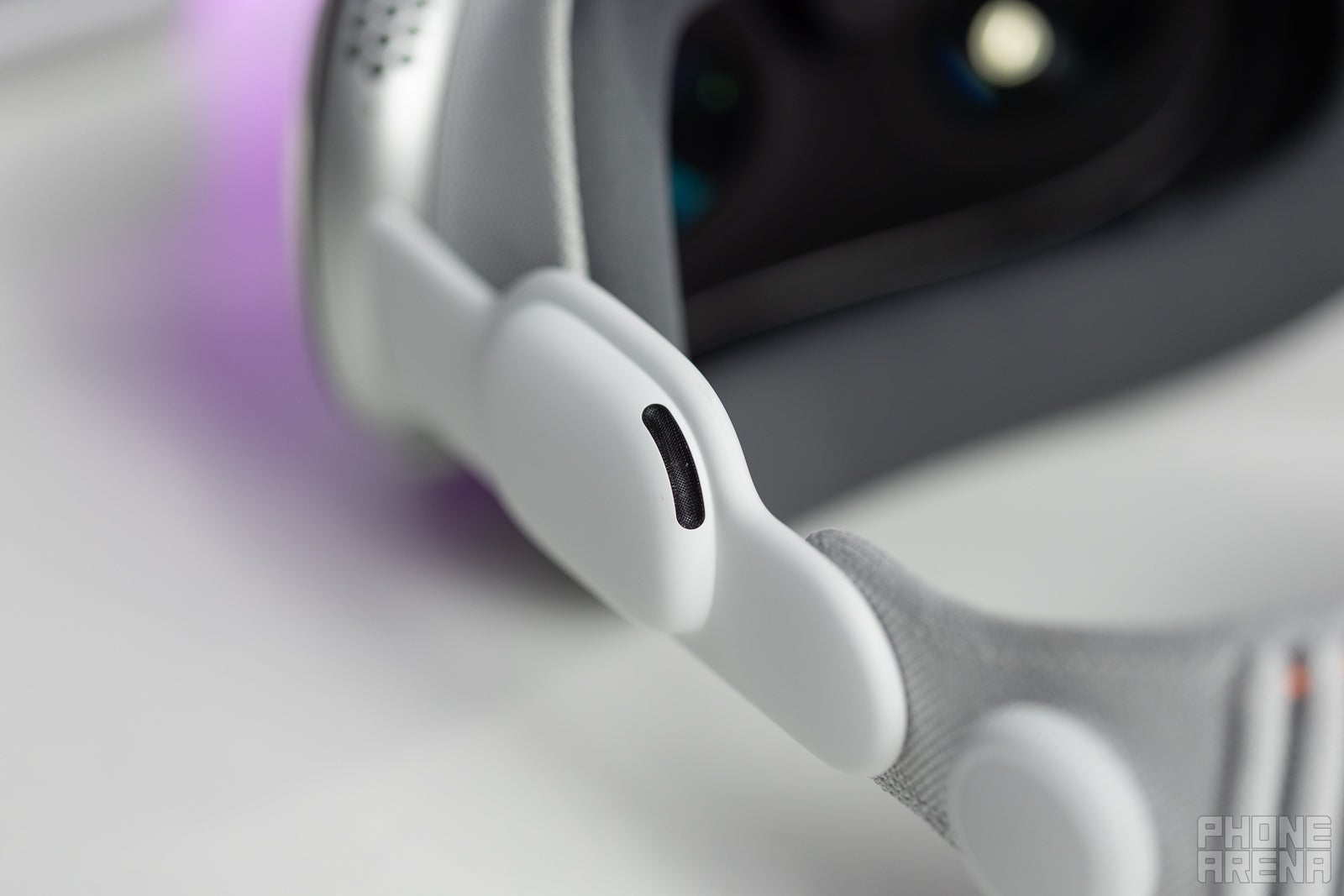
For example, you may be watching a YouTube video positioned right above your kitchen sink as you’re doing the dishes. As you turn to the right (and away from the video) to wipe something on the countertop, the audio from the video naturally “stays” with the video and appears to now come from your left. Spatial Audio… you get what it is. It works like magic with the Vision Pro. It’s very interesting to see how all these technologies Apple’s developed over the years now come to work in tandem in the Vision Pro.
Vision Pro review summary

As I moved from the Vision Pro to even a sizable notebook such as the 14” MacBook Pro, everything began to look boxed in, closed, cramped. Whereas, it didn’t feel like that before I got to try the Vision Pro.
Switching to the Vision Pro is like you’re unleashing the digital world into the real one, and that sure feels both good and empowering.
I think it’s extremely easy to take all the innovation and tech magic happening in the Vision Pro for granted and say “cool, but nobody’s going to sit with this on their face all day, let alone keep a tethered external battery in their pocket.”
True, but we’d be doing a disservice to ourselves if we focus solely on the current product (which is pretty great, actually) and not consider the technology’s potential, which should be the main point here.
The Vision Pro is not here to make you pay $3,500 for a heavy headset with short battery life. It’s here to sell us on the grand AR vision.
Needless to say, I’m sold. I can imagine a future where these headsets have become smaller, lighter, and more suitable to wear in public. A future where they don’t give you “passthrough” reality, but actual reality with just the virtual elements on top. A future with shared AR experiences that can ultimately bring us closer together, not further apart.
If you think the point of the Vision Pro is to keep you locked inside a beautiful virtual world, you’re missing the point. Today, we’re all glued to our phones in public. Ever seen a group of friends sitting together, everyone looking down at their phone?
The AR glasses of the future will enable us to once again lift our eyes up and look around, allowing us to share our digital experiences and interact with each other way more meaningfully.
The Apple Vision Pro is a vision of things to come. And what a grand vision it is!
Follow us on Google News


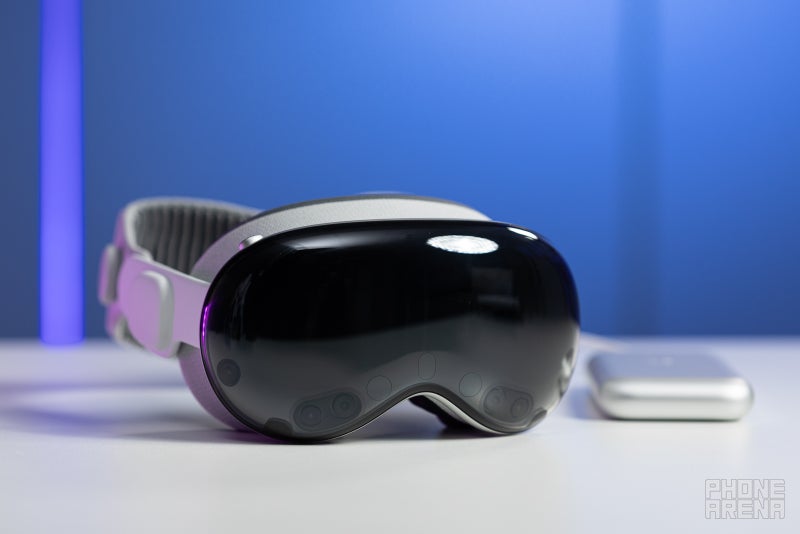



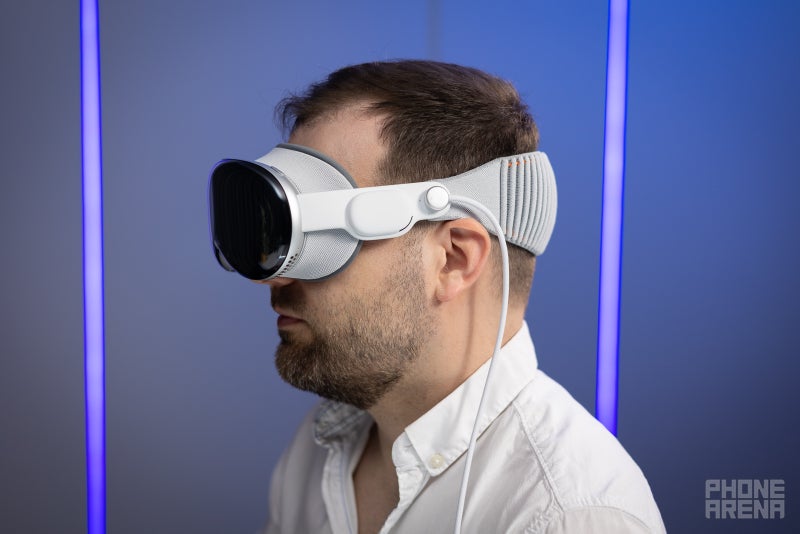

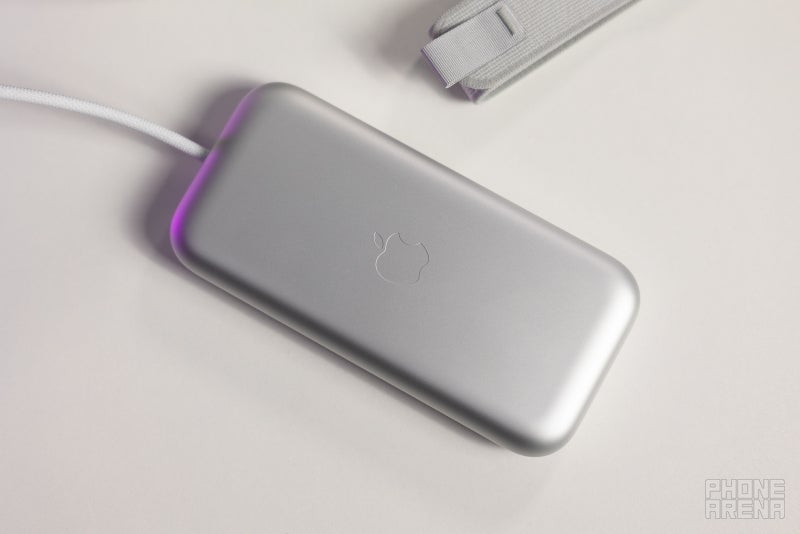
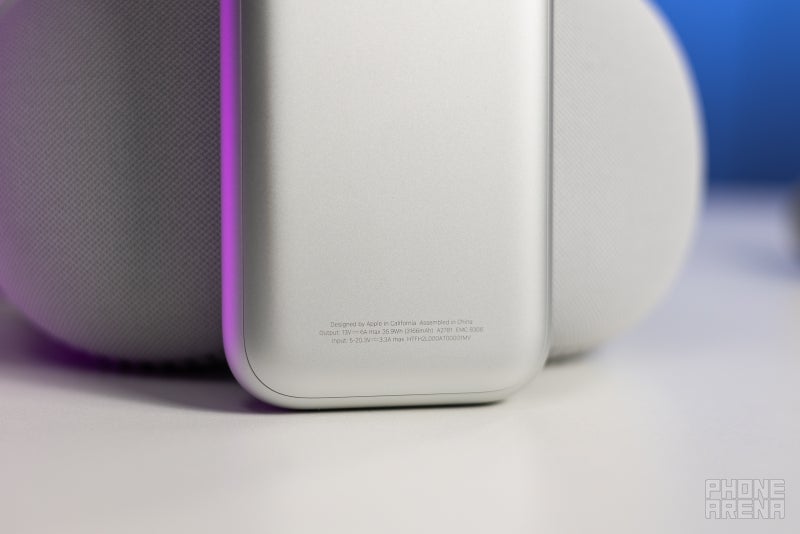









![A new Android bug is making it impossible to install new apps. Are you affected? [UPDATE]](https://m-cdn.phonearena.com/images/article/176703-wide-two_350/A-new-Android-bug-is-making-it-impossible-to-install-new-apps.-Are-you-affected-UPDATE.webp)

Things that are NOT allowed:
To help keep our community safe and free from spam, we apply temporary limits to newly created accounts: